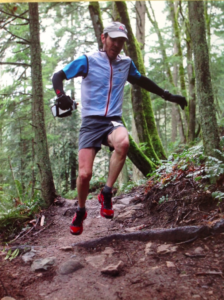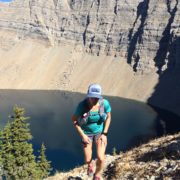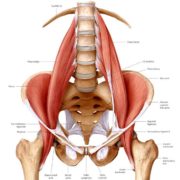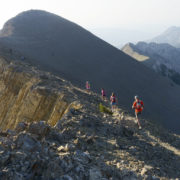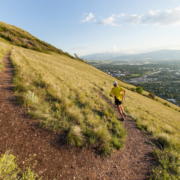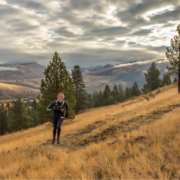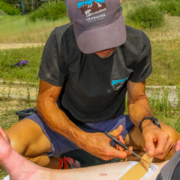Downhill Running Form and Training Techniques
John Fiore, PT
The challenges of running uphill are addressed through uphill interval training and techniques specific to climbing. Downhill running, however, is often a forgotten aspect of training. While it is true that many races are won on the unrelenting climbs, races are more often lost on the long, technical descents due to blown quads and poor technique. I do not claim to be a stellar downhill runner, but I will pass on useful training techniques founded in running biomechanics which may help you make the Swift Current cutoff time or even soar to victory at The Rut this September.
Regardless of body type or speed, the following seven training tips will improve your downhill running form and efficiency and reduce post-running soreness and injury risk.
Commit to running downhill: When the climb is over and the gradient tips downward, shift gears in your mind and body and commit to descending. Your leg musculature must now function in the lengthened position referred to as an eccentric contraction. In a lengthened position, your muscles are prone to soreness which is minimized through specified training.
Lean forward and use gravity: A common mistake many runners make is to lean back on the while descending. This “back seat” descending techniques results in higher impact loading through the heel, a shift of the center of gravity behind the body, and a higher incidence of blown quads or sliding feet. Lean forward slightly through the pelvis and trunk, using gravity to your advantage. Downhill running is often viewed as controlled free-falling and can actually be as fun as it sounds.
Move your feet quickly: Cadence plays a crucial role in increasing running efficiency by reducing joint impact loading and conserving energy. Increasing your cadence (160-180 foot strikes per minute) will decrease joint impact forces, reduce muscle fatigue, and reduce the incidence of tripping on a stray rock. Try seeking out rocks to land on rather than navigating around rocks as if you are crossing a stream.
Look down the mountain and anticipate your next move: When running uphill, it is best to look a step or two ahead rather than face the entire climb head-on. In contrast, when descending, keep your eyes five to ten feet ahead of your feet and anticipate your next two steps in your mind and your legs will follow. Practice this technique on a rocky familiar descent and train your proprioception (non-visual sense of foot-leg position in space).
Relax your arms and utilize your entire body for balance: Balance becomes more of an issue running downhill at speed. Utilize your arms for balance and allow them to flail wildly while maintaining stable, strong trunk and hip musculature. Core strength and joint stabilization will pay off on the descents and it is important to utilize a regular program to achieve functional running strength.
Simulate race terrain in training: If your upcoming race includes downhill running or technical, rocky terrain, it is imperative to practice on similar terrain. Missoulians are fortunate to have a choice of rocky, steep terrain less than one hour away in any direction from town. Rocky trails abound in the Bitterroot, Rattlesnake, and Mission Mountains. Practice downhill intervals, climbing back up, and practicing a different line and varying your cadence and foot placement strategies.
Emphasize eccentric single leg training: Runners tend to focus on step ups, squats, and non-weight bearing gluteal exercises, but the secret to confident downhill running lies in eccentric single leg strengthening. Utilize single leg plyo-hops, box jumps, and even single leg box jumps onto an uneven surface such as a pad or Bosu Ball to train your body to fly down the scree and talus slopes of your favorite mountain race. For more specific questions related to downhill running training, injury treatment or prevention, call or email me at Sapphire Physical Therapy.
John Fiore, PT


